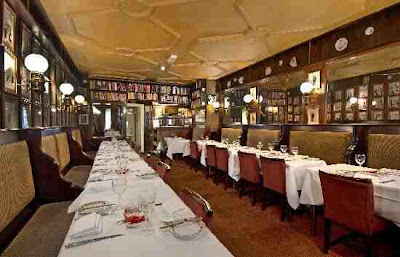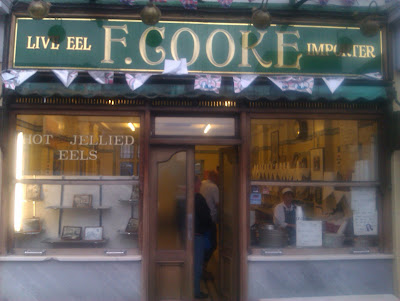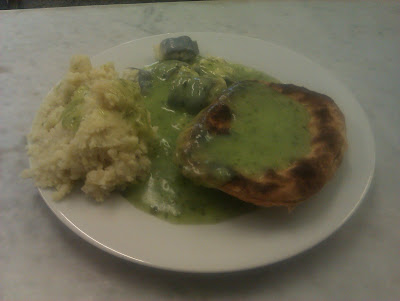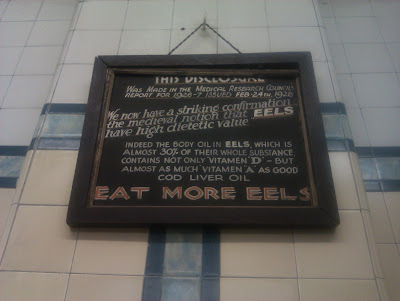
Restaurant: The Gay Hussar
Location: Soho
By Boeing: 698 miles
By Boris Bike: 2 miles
Hungary is one of the most intriguing countries in Europe, neither part of the confident, commercial West nor the vibrant East emerging from the soviet shadow. It is an ancient culture with a heady history and complex ethnic origins. The 20th century wasn’t kind to this once proud and great nation. A cultural fulcrum within the vast Habsburg empire, the end of the Great War saw it splinter into a nation state. But while neighbouring Austria became strong, confident and modernised Hungary struggled to assert itself in the modern age. In England it is chiefly known for its cultural centre and capitol Budapest and an athletic goalkeeper in the 1950s.

In the spheres of politics, industry and sport it rarely appears on the international radar. In some ways, therefore, it is trapped in time, reflecting back on a glorious past rather than facing its uncertain future. The same could be said of England of course, which is perhaps why i felt a distant kinship when entering the Gay Hussar, the only Hungarian restaurant in London, and a famous, long-standing Soho institution.
The restaurant has changed little since it opened in the 1960s. In those days Soho was a seedy den of scandal. Thanks largely to Peter Cook’s ‘Establishment’ club the area became trendy and got a fashionable facelift as new bars and clubs moved in. But the Gay Hussar remained the same and now looks incongruous amidst the new age, new-fanged bars and brasseries nearby. This gives it almost a Hansel and Gretel charm.

The restaurant is narrow with two rows of chairs facing each other. It is gloomy and low-lit, to some cosy to others austere, forever winter even with summer sun beating down outside. As you are shown to your table the eye is drawn to the hundreds of framed caricatures on the walls. These are, the waiter gleefully explained, pictures of famous dinner guests. There were some instantly recognisable features amongst the bulbous noses and coiffure quiffs. If a famous person books a cartoonist is on standby to draw them in a post prandial sitting. Being deemed ‘famous’ enough for this honour is akin to inclusion in Who’s Who or an invitation to the Queen’s garden party.
While we were half-recognising statesmen from the seventies the owner approached, twitching his nose and rubbing his hands like a clothed otter. Within seconds he had reeled off a few jokes so dry that it was only half way through pudding that we recognised them as such. With an occasional eyebrow motioned rebuke to one of his Indian waiters he took us through the menu. The only decision made on his first visit was for a bottle of the legendary Bull’s Blood, a Hungarian red so viscous I am willing to believe it does indeed contain Haemoglobin.
While my companions shared a platter of cured pork, I chose the rather more adventurous wild cherry gaspacho. It was bright pink and thick, like a Strawberry milkshake from McDonalds. Except this was boozy too. It was the strangest starter of the fork and flag odyssey to date. I’ve had many soups, from French Onion to sour Garlic, but none have been sweet. If served this as a pudding i’d have been delighted. Served as a starter knowing i had a further pudding to come I was over the moon. In the pink, you could say. Containing whole cherries and laced with both cherry liqueur and white wine it was a very indulgent entree.
For the main course there was no option but to go for the Goulash. This thick cream and paprika based stew is world renowned as a winter warmer. With striking similarities to a Czech stew it was filling and flavoursome. You are well advised to go several days without consuming a single calorie before you eat at a central European restaurant. These dishes are designed for people who have felled and dragged ten trees in sub-zero temperatures. For those who haven’t exerted themselves thus it can sit heavily on the stomach.
With 5000 calories a conservative estimate for the main dish it is only the eyes that crave a dessert. Had the choices been familiar I may well have joined my dining companions in moving straight to coffee. But the hazelnut puree just sounded too tempting. When it was served i stared at it with stern consternation. Initially i thought a particularly dozy waiter had delivered me a dish from an adjoining restaurant. For this looked for all the world like a bowl of wholemeal spaghetti with a blob of cream cheese on top. Mine was a very tentative taste, a furtive foray with my fork. But it was delicious, a rich nutty paste that must have been wrung through a mincer. Its looks certainly belied its taste.
Hungary was an inverted sandwich of an evening where the filling was the staple and the slices of bread the surprise. I expected it to be hearty and filling but the complexities and subtleties of the flavours were eye-opening, quite literally in the case of the gaspacho. Hungary has more depth of cultural sophistication than you may imagine.

















































